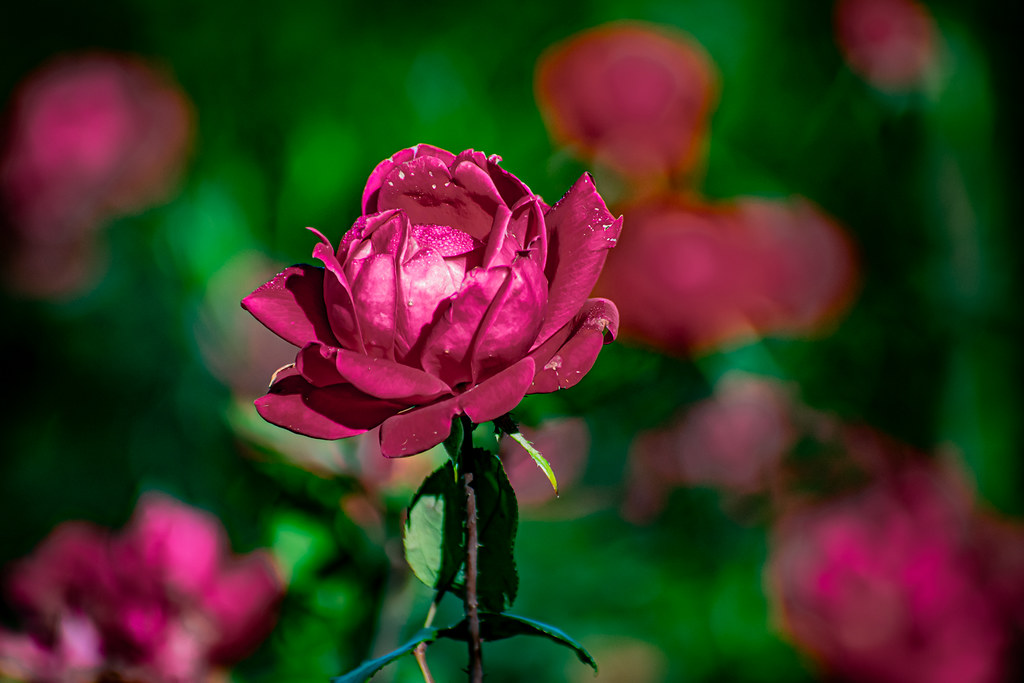#Lens Selection
Text
13.カメラを始める際、単焦点レンズが最適な理由/Why a single focal length lens is the best way to begin your photographic journey.
カメラを始める際、単焦点レンズはフォトグラファーとしてのスキルを磨くのに理想的な選択肢です。この記事では、なぜ単焦点レンズが最適なのか、私の経験をもとにNikonZシリーズを例に挙げてご紹介します。
When beginning with a camera, a single focal length lens is an ideal choice to hone your skills as a photographer. In this article, I will show you why a single focal length lens is the best choice, using the Nikon Z series as an example based on my experience.
綺麗に撮るなら単焦点/Single focal length for…
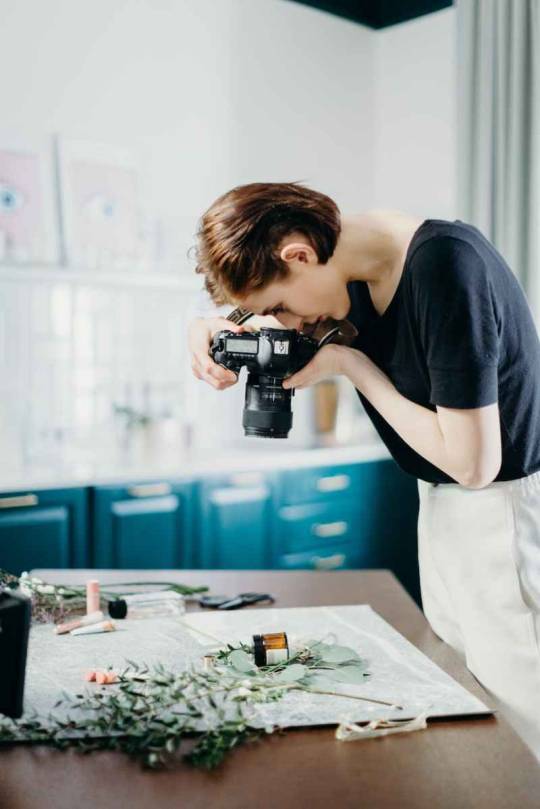
View On WordPress
#50mm Lens#50mmレンズ#Affordable Pricing#カメラの軽量化#カメラ機材#クリエイティビティ#フォトグラファー#フルサイズミラーレスカメラ#ライトの活用#レンズ選択#Camera Gear#Camera Portability#Creative Control#Creativity#画質向上#For Beginners#Full-Frame Mirrorless Camera#Improved Image Quality#Lens Selection#Nikon Z Series#Nikon Zシリーズ#Photographer#Photography#Photography Enthusiasts#Photography Techniques#Prime Lens#Shooting Techniques#Utilizing Light#写真愛好家#写真技術
2 notes
·
View notes
Text
10 Best Tips to Improve Photography Quality
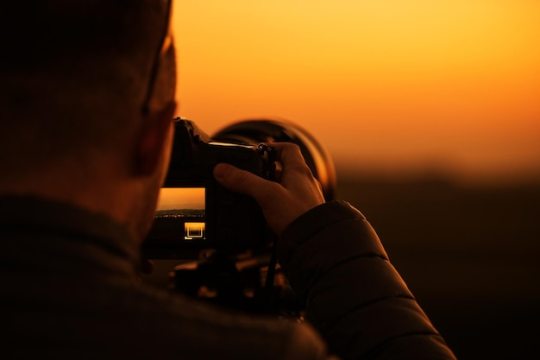
In a world saturated with images, have you ever wondered what sets apart truly exceptional photography from the rest?
At Studio1 Photography, we’ve meticulously curated a list of the 10 best tips to enhance the quality of your photographs.
From the nuances of lighting techniques to the selection of essential equipment, each tip is designed to elevate your craft and transform your images into works of art.
Curious to uncover the secrets that can take your photography skills to the next level?
Mastering Lighting Techniques

Mastering lighting techniques in photography is essential for creating stunning and impactful images that capture the essence of a scene or subject. In photography, light is our paintbrush, and understanding how to manipulate it can transform an ordinary photograph into a work of art. When it comes to lighting techniques, both natural and artificial sources play a crucial role in shaping the mood and atmosphere of a photo.
Artificial lighting techniques, such as Three-Point Lighting, provide photographers with the ability to control the intensity and direction of light to highlight specific elements within a composition. By experimenting with low-key and high-key lighting, photographers can create dramatic or bright effects that enhance the overall visual impact of their images. Understanding color temperature, measured in Kelvin, allows photographers to adjust white balance accurately and manipulate the mood of their photos through the creative use of colored gels.
In mixed lighting situations, where both natural and artificial light sources are present, it’s essential to balance these elements effectively to achieve a harmonious blend. By utilizing tools like grids and flags to control light spill, photographers can navigate complex lighting scenarios with confidence and creativity, ensuring that every image tells a compelling visual story.
Essential Equipment Selection

When it comes to improving photography quality, selecting essential equipment plays a key role in enhancing our skills and expanding creative possibilities.
Here are three crucial equipment choices to consider:
Camera with Manual Controls: Opt for a camera that allows manual adjustments to experiment with settings and improve your understanding of photography techniques.
Versatile Lenses: Invest in lenses that offer varied perspectives and compositions, enabling you to capture a wide range of subjects creatively.
Post-Processing Editor: Utilize post-processing software to enhance your images and bring out the best in your photography, ensuring a professional finish.
Understanding Composition Principles
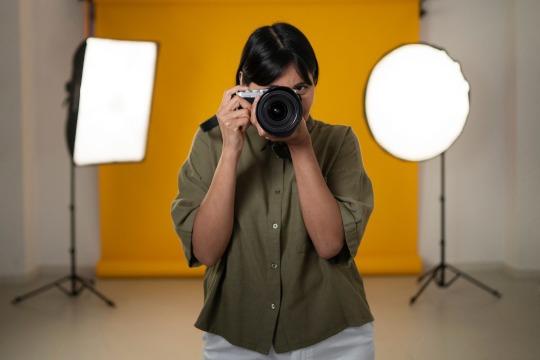
Understanding the principles of composition is essential for capturing visually compelling photographs that engage viewers and convey the desired message effectively. When it comes to composition, elements like lines, shapes, forms, values, spaces, and colors play a crucial role in creating impactful images.
Concepts such as rhythm, balance, proportion, emphasis, and harmony, along with techniques like variety, movement, and continuity, contribute to the overall visual appeal of a photograph. Additionally, applying Gestalt principles such as proximity, figure/ground relationship, symmetry, and closure can further enhance the composition.
To enhance composition, techniques like selective focus to emphasize subjects, simplicity to maintain viewer engagement, natural framing using elements for creative framing, and experimenting with zooming in or out and shooting vertically for unique perspectives can be employed. By understanding and applying these composition principles and techniques, photographers can elevate the quality of their images and create more visually appealing and engaging photographs.
Color Coordination Mastery

As photographers, we focus on mastering the art of color coordination to enhance the visual impact of our images. Understanding color theory fundamentals, color relationships and schemes, as well as color psychology and emotional impact are essential aspects of achieving color coordination mastery.
Color Theory Fundamentals:
The color wheel serves as a guide for chromatic relationships.
Primary, secondary, and tertiary colors form the basis of all color combinations.
Utilizing the color wheel aids in creating harmonious color palettes in photographs.
Color Relationships and Schemes:
Harmonious color schemes like complementary and analogous colors enhance visual appeal.
Triadic and split-complementary schemes offer balanced and contrasting color combinations.
Selecting the right color scheme can guide viewer focus and evoke specific emotions.
Color Psychology and Emotional Impact:
Colors play a significant role in evoking emotional responses from viewers.
Different colors convey distinct moods and feelings.
Mastering color psychology is crucial for storytelling and creating impactful images that resonate emotionally with the audience.
Perfecting Posing Techniques

To enhance the visual impact of portraits, we prioritize perfecting posing techniques for optimal expression and individuality. When it comes to posing in portrait photography, it’s essential to focus on expressing individuality and creating a connection between the subject and the viewer. By highlighting unique personalities and establishing emotional connections, posing can truly elevate the quality of a photograph. Here are some key posing techniques to keep in mind:

Advanced Post-Processing Skills

After perfecting posing techniques to enhance the visual impact of portraits, mastering advanced post-processing skills becomes essential for refining and elevating the overall quality of photographs. Advanced post-processing skills allow photographers to bring out the best in their images by manipulating colors, enhancing details, and correcting imperfections.
Here are three key aspects to focus on when honing your post-processing abilities:
Mastering Editing Software: Becoming proficient in tools like Adobe Lightroom and Photoshop is crucial for advanced post-processing. These software options offer a wide range of editing capabilities, from adjusting exposure and contrast to fine-tuning colors and sharpness.
Utilizing Non-Destructive Editing: Embracing non-destructive editing methods ensures that your original image remains untouched while you make enhancements. This approach allows for experimentation without compromising the integrity of the initial photograph.
Exploring Advanced Techniques: Delve into more complex post-processing techniques like dodging and burning, which can dramatically improve the overall look of your images. Additionally, learning about noise reduction and selective editing will further elevate the quality of your photographs.
Studio Vs. Outdoor Photography

We find that the choice between studio and outdoor photography often depends on factors such as preferred style, home decor preferences, and the temperament of children involved. Studio family photography typically utilizes studio lighting and backdrops, offering a controlled environment with shorter shoot durations and consistent results. On the other hand, location family photography provides more options for backdrop selection, uses natural light primarily, and involves longer shoot durations, resulting in unique and storytelling images tailored to each family.
When deciding between the two, it’s essential to consider your preferred photography style, how the photos will complement your home decor, the children’s temperaments, and the potential impact of weather on outdoor shoots. Additionally, the photographer’s experience with children can play a significant role in determining which setting would be most suitable for capturing memorable family moments. Ultimately, both studio and outdoor photography have their unique advantages, and the choice between them will largely depend on your specific preferences and requirements.
Angle Exploration and Innovation

Exploring different angles in photography allows for innovative perspectives and creative opportunities to enhance the visual storytelling of images. When we experiment with angles, we can uncover unique ways to capture subjects, evoke emotions, and engage viewers.
Here are three ways angle exploration and innovation can elevate photography quality:
Enhanced Visual Interest: By trying different angles such as low angles to create a sense of power or high angles to convey vulnerability, we add depth and intrigue to our photos.
Emotional Impact: Utilizing close-up shots to focus on specific details or extreme close-ups for intimacy can evoke strong emotions and create a connection between the viewer and the subject.
Narrative Development: Incorporating varied camera angles like bird’s-eye view or worm’s eye view can transform the narrative of a photograph, offering fresh perspectives and enhancing the overall storytelling aspect.
Tripods and Stability Solutions

Looking for the perfect tripod to enhance stability and elevate your photography game? When considering tripods and stability solutions, weight and portability play a significant role. It’s essential to find a balance between lightweight for ease of travel and sturdiness for stability during shoots.
Opt for materials like carbon fiber or aluminum that offer both durability and stability without excessive weight. Sturdy tripods are crucial to prevent camera shake, ensuring sharp images, especially in low-light situations and long exposures.
Additionally, focus on ease of use and adjustability for a seamless workflow. Look for intuitive leg-locking mechanisms and rapid adjustment systems that enhance usability. Enhanced stability features such as adjustable leg angles and load capacity for gear support are essential for various shooting scenarios.
Lens Selection Guide

When choosing the right lens for your photography needs, it’s essential to consider various factors such as focal length, aperture, and compatibility with your camera’s sensor.
Focal Length
Determines width or zoom of the shot
Wide-angle for expansive views, telephoto for close-ups, and specific ranges for different photography styles.
Aperture
Controls the amount of light entering the camera
Wide apertures for low light and versatile shooting options.
Compatibility with Camera’s Sensor
Ensure the lens matches your camera type and sensor size for optimal performance.
Selecting the appropriate lens type based on these criteria can significantly impact the quality of your photographs. Whether you need a prime lens for its brightness and sharpness or a zoom lens for flexibility in composition, understanding these aspects will guide you towards capturing stunning images tailored to your unique vision and style.
Studio1 Photography Reviews

While understanding the importance of lens selection in photography, let’s now turn our focus to exploring the reviews of Studio1 Photography and their impact on capturing exceptional images. At Studio1 Photography, we take great pride in the positive feedback we receive from our clients. Our dedication to providing top-notch services and creating stunning visual content has resonated with many individuals who’ve trusted us with their photography needs. The reviews of Studio1 Photography highlight our commitment to professionalism, creativity, and exceeding expectations.
Clients have praised our team for their attention to detail, creativity in capturing moments, and the ability to make the photoshoot experience enjoyable and stress-free. These reviews not only showcase the quality of our work but also serve as a testament to the relationships we build with our clients. By understanding their vision and translating it into captivating images, we’ve been able to establish ourselves as a trusted name in the photography industry.
Some Reviews
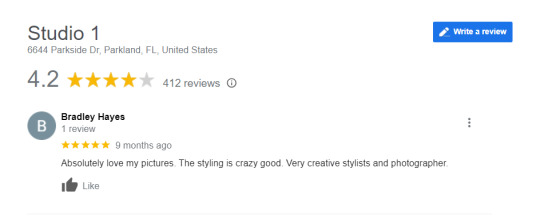
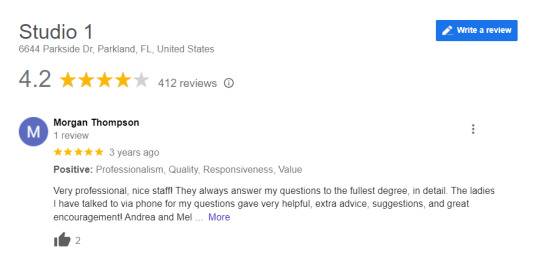

Frequently Asked Questions
How Can I Improve My Photography Quality?
We improve photography quality by understanding lighting nuances, mastering composition techniques, and investing in essential equipment. Experiment with angles and colors, gradually advancing to complex setups. Post-process with software like Adobe Lightroom for polished results.
How Can I Improve My Studio Photography?
To enhance our studio photography, we focus on mastering lighting techniques like softboxes and reflectors, experimenting with angles and colors, and investing in essential equipment. We gradually progress from simple setups and pay attention to composition and post-processing for quality images.
How Do I Get Studio Quality Photos?
To achieve studio quality photos, we focus on mastering lighting techniques, experimenting with angles and colors, investing in essential equipment, and refining post-processing skills. It’s a gradual process of improvement that involves attention to detail and practice.
What Is the Best ISO Setting for Studio Photography?
In studio photography, we often stick to the base ISO of our cameras for the best image quality. Lower ISOs like 100 or 200 are perfect for minimizing noise and maintaining sharpness. It’s crucial to avoid higher ISOs to prevent digital noise.
Conclusion
In conclusion, our journey towards exceptional photography quality has been a continuous learning process filled with experimentation, innovation, and dedication.
By mastering lighting techniques, selecting the right equipment, understanding composition principles, and perfecting our skills in various aspects of photography, we’ve been able to capture mesmerizing images that stand out from the rest.
Join us in our quest for excellence and elevate your photography game to new heights.
#studio photography#photography#studio1photography#photography tips#photography quality#angle exploration#lens selection
0 notes
Text
Choosing the Right Machine Vision Lens: A Comprehensive Guide
Machine vision technology has rapidly evolved, and selecting the appropriate lens for your application is now more critical than ever. With the wide variety of lenses available, choosing the right one can be a daunting task. However, by considering a few key factors, you can make an informed decision that will significantly impact the performance and image quality of your machine vision system. In this comprehensive guide, we will delve into the various aspects of selecting the perfect machine vision lens to meet your specific needs.
Fixed, Varifocal, or Zoom:
The first decision to make when choosing a machine vision lens is whether you need a fixed, varifocal, or zoom lens. Each of these options has its own set of advantages and is suited for different applications.
Fixed Lenses: Fixed lenses are an excellent choice when you have a consistent working distance and require sharp, high-quality images. These lenses have a fixed focal length, meaning they do not offer the flexibility to adjust the zoom or focus. If your application involves stationary objects or a controlled environment where the working distance remains constant, a fixed lens is a cost-effective and reliable choice.
Varifocal Lenses: Varifocal lenses are designed for situations where the subject is in motion or may require frequent refocusing. These lenses offer the flexibility to adjust the focal length and focus, making them ideal for applications that involve objects at varying distances. Varifocal lenses can save time and effort by allowing you to adapt to changing conditions without replacing the lens.
Zoom Lenses: Zoom lenses are the most versatile of the three options. They can adapt to distant subjects by changing the focal length, providing you with the ability to zoom in or out as needed. This adaptability is particularly valuable in applications where the working distance is not constant, or when you need to capture fine details in both nearby and faraway subjects. While zoom lenses offer flexibility, they are typically larger and more complex, which can result in a higher cost.
Focal Length and Focus:
The focal length of a machine vision lens plays a crucial role in determining the field of view (FOV) and the magnification of the image. Understanding how to choose the right focal length is essential for capturing the desired image.
Field of View (FOV): The focal length directly affects the FOV. A longer focal length will provide a narrower FOV, which means the lens will capture a smaller area with greater detail. Conversely, a shorter focal length lens will result in a broader FOV, allowing you to capture a larger area but with less magnification. When selecting the focal length, consider the size of the objects or areas you need to capture in your application.
Magnification: In addition to FOV, the focal length also determines the magnification of the image. Longer focal lengths result in greater magnification, making them suitable for applications where fine details are essential. Shorter focal lengths, on the other hand, provide lower magnification but are ideal for applications where capturing a larger area is a priority.
To choose the right focal length for your machine vision lens, you need to have a clear understanding of your application's requirements and objectives. Analyze the size and details of the objects you are inspecting to determine the optimal focal length for your specific case.
Aperture and Lighting:
The relationship between aperture and lighting is critical for achieving the desired depth of field and image quality in machine vision applications.
Aperture: The aperture of a lens controls the amount of light that enters the camera sensor. It is typically represented by an f-number (e.g., f/2.8). A smaller f-number indicates a wider aperture, allowing more light to enter, while a larger f-number means a narrower aperture, which restricts the amount of light. Selecting the right aperture is essential to achieve the desired depth of field.
Depth of Field (DOF): The depth of field is the range within which objects appear acceptably sharp in an image. It is influenced by the aperture size, with wider apertures producing a shallower DOF and narrower apertures providing a deeper DOF. The choice of aperture depends on your application's requirements. If you need to capture fine details in a specific focal plane, a narrow aperture might be suitable. For situations where multiple objects at varying distances must be in focus, a wider aperture may be preferable.
Consider the lighting conditions of your environment, the specific requirements of your application, and the depth of field you need to achieve when selecting the aperture for your machine vision lens.
Resolution and Accuracy:
When it comes to machine vision, resolution and accuracy are paramount. To ensure the best results, you must find a lens that offers the highest resolution for your subject or operation. Consider various factors, including image clarity, application demands, available options, and cost-benefit analysis.
Resolution: Resolution refers to the lens's ability to capture fine details in an image. Higher resolution lenses produce sharper and more detailed images, which can be crucial for applications that require precision, such as quality control and measurements.
Application: The specific application of your machine vision system will dictate the level of resolution required. If you are inspecting small electronic components, you will need a lens with exceptional resolution to detect defects. On the other hand, if your application involves monitoring large industrial processes, a lower resolution lens may suffice.
Cost-Benefit Analysis: While higher resolution lenses offer superior image quality, they can be more expensive. Therefore, it's essential to perform a cost-benefit analysis to determine the optimal balance between resolution and cost for your application.
By carefully considering these factors, you can select a machine vision lens that provides the resolution and accuracy required for your specific needs.
Working Distance:
Selecting the correct working distance is crucial when choosing a machine vision lens. Designers calculate the needed working distance using various factors, including focal length, the length of the inspected object, sensor size, and the size of the objects being observed.
Focal Length and Working Distance: The focal length of the lens plays a significant role in determining the working distance. A longer focal length results in a greater working distance, while a shorter focal length is associated with a shorter working distance. To ensure that the lens can effectively capture the desired field of view, it is essential to match the focal length to the working distance required for your application.
Object Size: Another factor to consider is the size of the objects you are inspecting. If your application involves large objects, you may need a lens with a longer working distance to maintain a suitable field of view.
By carefully calculating the working distance based on the focal length, object size, and other parameters, you can ensure that the lens you choose is perfectly suited to your application's requirements.
Sensor Compatibility:
Different sensors require different lenses, and it's crucial to select a lens that is compatible with your camera's sensor type and size. Sensor compatibility directly affects the image quality and the lens's ability to cover the desired field of view.
Sensor Size: The size of the camera sensor influences the field of view. Smaller pixel sensors require higher resolution lenses to achieve better image quality, as they capture more detail in a smaller area. In contrast, larger sensors require larger lenses to cover the same field of view.
Sensor Type: The type of sensor, whether it's a CCD or CMOS sensor, also plays a role in sensor compatibility. Different sensors have varying sensitivity to light and may require adjustments in the lens to optimize image quality.
When selecting a machine vision lens, consider the sensor size and type of your camera to ensure that the lens can effectively cover the desired field of view and produce high-quality images. Matching the lens to the sensor is essential for achieving the best results in your machine vision application.
Camera, Mount, and Location:
Compatibility with your camera and its physical location is another critical aspect of choosing the right machine vision lens. Ensuring that the lens aligns with the camera's sensor type and mount is essential for seamless integration.
Camera Sensor Type: Confirm that the lens is compatible with the sensor type of your camera, whether it's a CCD or CMOS sensor. Mismatched sensors and lenses can result in reduced image quality and potential compatibility issues.
Lens Mount: Different cameras use various lens mounts, such as C-mount or CS-mount. Ensure that your lens choice matches the camera's lens mount to facilitate easy installation. An incompatible mount can lead to alignment problems and may require additional adapters or adjustments.
Camera Location: Consider the physical location of the camera in your machine vision system. If the camera is difficult to access, you may want to opt for a lens with remote focus, iris, and zoom control capabilities. For instance, the LensConnect Series offers power and control through USB, allowing you to remotely adjust focus, zoom (in the case of varifocal lenses), and iris. This feature can simplify camera setup and maintenance, particularly in industrial or hard-to-reach environments.
Choosing a lens that seamlessly integrates with your camera and its location is essential for ensuring the optimal performance of your machine vision system.
Conclusion:
Selecting the right machine vision lens is a crucial decision that directly impacts the performance and image quality of your vision system. Before making your choice, consider the following key factors:
Fixed, Varifocal, or Zoom: Determine whether your application requires a fixed, varifocal, or zoom lens based on the working distance and subject characteristics.
Focal Length and Focus: Choose the focal length that aligns with your field of view and magnification requirements.
Aperture and Lighting: Select the appropriate aperture to achieve the desired depth of field and image quality based on your lighting conditions.
Resolution and Accuracy: Consider the application's demands and perform a cost-benefit analysis to determine the required resolution for your lens.
Working Distance: Calculate the working distance based on focal length, object size, and other factors to ensure the lens effectively captures the desired field of view.
Sensor Compatibility: Match the lens to your camera's sensor type and size to optimize image quality.
Camera, Mount, and Location: Ensure compatibility between the lens and your camera's sensor type, lens mount, and the camera's physical location.
By thoroughly evaluating these factors and understanding your specific application's needs, you can make an informed decision and select the best machine vision lens to achieve exceptional results in your machine vision system . Information flows from the lens first, so choosing the right lens is a fundamental step in the success of your machine vision project.
To Know More About Machine Vision Lens Visit:http://mvrpl.com/index.html
#Machine vision lens#lens selection#focal length#aperture#resolution#working distance#sensor compatibility#image quality#camera integration#varifocal lens#fixed lens#zoom lens.
0 notes
Text
so you know how I've been talking about the Kazuha Demon Slayer crossover for ages now?
Hahahaha
Chapter 1 is out :)
#ahjskdkhjf#drops this and runs#I will be honest!!! I dont think I characterized sanemi very well lmao#he's the exact kind of character I don't know how to write! Like selectively respectful and doesn't give a shit otherwise#and also like extremely angry and driven and such! I am much more used to writing quiet pensive more rational characters I think#I had to rewrite this first chapter like 3 times because I couldn't figure out how to get Sanemi and Kazuha to mesh together very well#Like neither of them are particularly trusting on first meeting someone especially with added suspicion from both sides#and I still have like. no idea how to actually write grief which greatly complicates writing this#because it's meant to be an exploration of Kazuha's grief through the lens of other demon slayer characters#oh well if people don't like it I suppose it was still good practice on writing#It is 1 AM and I am Letting Anxiety Get the Better of Me#and I have to wake up at 8 tomorrow so I should go sleep#ok bye
58 notes
·
View notes
Text
Hey guess what, I'm on Bandcamp now! :D I've already released my first EP here called gentle sounds, featuring gentle noise and a few other cutesy tracks ^0^
When I start releasing albums, they'll be available here! ✌️
#personal#bandcamp#this is kind of a test release to try out bandcamp hehe#if you check it out that would be cool :>#my music#vocaloid#kagamine rin#kagamine len#chipspeech#terminal 99#rotten.st#dee klatt#also it's gonna be on streaming but i'm fighting with my distributor rn#they claim i haven't selected the right language(s) but i did T_T
9 notes
·
View notes
Text
listen you have to have to have to realize how important zines are to the cultural zeitgeist. zines, pamphlets, even fucking brochures have been so essential to nearly every cultural liberation of the past several centuries. are you listening. is this thing on
#buy zines!! support zine creators!! and yes i am including fandom zines in this#the microcosm of culture that is only available through the lens of the creation of the layperson is essential to the understanding of#the culture as a whole#you can read full books from the harlem renaissance and learn all of the essential natures but if you never read a personally released#selection of art and poetry by someone you've never heard of. will you really know what happened there. who happened there.#i'm very passionate about zines and the like#mer rambles#if you take this as an invite to start discourse w me pls know i will just remove it argue with a wall idc#written and drawn records of the personal experience of historical events will always be and have always been inarticulably important
21 notes
·
View notes
Text
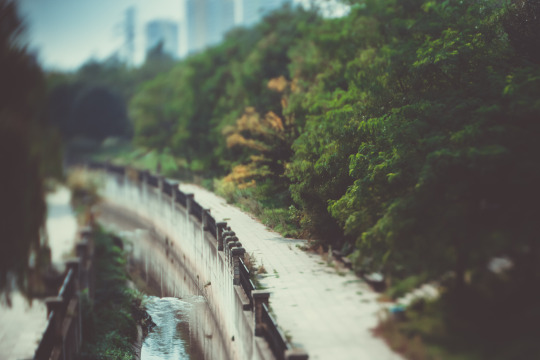
#photographers on tumblr#original photography#landscape#urban#dreamy#lens whacking#summer#river#light#blurred#trees#selective focus#cityscape
42 notes
·
View notes
Photo

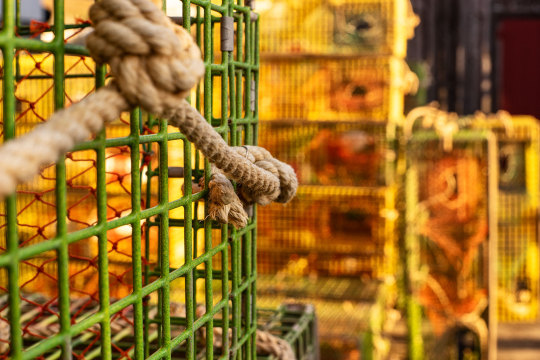

Lobster Traps
Maine
Yashica Yashinon-DX 50mm f/1.7 lens
Sony A7
#lobster traps#maine#original photographers#photographers on tumblr#original photography#maine coast#seacoast#fishing#fishing gear#wire#rope#stacked#colorful#bokeh#selective focus#bokeh photography#new england#vintage lens#yashica#yashinon#sony alpha#Guy Biechele
58 notes
·
View notes
Video
More in back. by Tom
Via Flickr:
October Red Roses are still Blooming.
#Bokeh#Selective Focus#Red#Rose#Flower#FLORA#Interestingness#Oregon#outside#October#Digital#D500#nikkor#Nikon 70-300 mm VR lens#Natural#Nature#Nikon#scene#flickr
2 notes
·
View notes
Text
i feel like the version somebody prefers of a song in proseka says a lot about them, so! my very first poll >:3c!
#proseka#project sekai#colorful stage#hatsune miku colorful stage#mine#if ur wondering im a mix!#i have my game set to virtual singer by default. but there are a few songs i prefer the sekai version. mostly wonderhoys' lol#& i also have all of len's available covers selected lmao. if he's in the sekai ver that's my preferred version too#polls#also have all of rin's covers/versions of songs & most of mizuki/saki's solos! :)
7 notes
·
View notes
Text
In love with the way they're relationship is portrayed as Taylor being at an 11 all the time (whether happy or sad, creating or desponding, dreaming or fantasizing about revenge or just seething) and Joe is a picture of constancy and support just grounding her and at the same time admiring her in those extremes and cheering her on.
#taylor swift#to be understood in the light of 'the taylor and Joe who feature as figures in the narrative of the last five albums'#not taylor and joe as real people#not because the picture in the narrative is inaccurate persay but because it is selective (and therefore incomplete) and interpreted#and refracted through a lens of art
11 notes
·
View notes
Note
Kyo I've just had a thought for your vocaloid list, childish war for 15 Dazai and Chuuya (and a fun fact for you bacterial contamination and dancing samurai were written by the same person)
(Vocaloid songs as bsd characters list)
YEAH YEAH YES YES YES THAT IS SO FITTING FOR THEM it's the striking and impactful contrast between kids playing arcade vibes and military language is SO young soukoku energy, It's literally them playing games together in the afternoon and killing people as mafia operatives at the night. LIKE I can totally imagine a musical number with them singing this at the arcade ahah (sorta like the NicoNico Music Party 2016 performance). Hirotsu being the butler from the original music video cause why not amzbdjslxb. “I cheat by nature” Rin is Dazai lol. And also the “But you, only you, // are a suitable rival for me.” –Aww, that's actually cute :')
I already got a part two of that bsd / Vocaloid post stored somewhere, but for the matter, 15 Dazai listens to Kocchi Muite Baby
#And aaaahh I'm not familiar with those songs I didn't know they were from the same producer???#But yesterday I found out that World's End Umbrella‚ Close and Open Demons and The Dead‚ Matryoshka‚ Sand Planet#Are all by the same producer like what. WHAT THAT IS NOT TRUE#I feel so betrayed by my own brain because I remember a long time ago checking the profile of of World's End Umbrella author–#but I didn't recognize anything of them?? So either I selected the wrong person or I'm just stupid idk#But seriously it was mind blowing like I've been into Vocaloid since January 2021 I don't believe I never realized#And it's insane because now I can totally hear the same Miku tuning between World's End Umbrella and Close and Open Demons and The Dead–#and even a little with Matryoshka too 😭😭😭#What's next that the Just Be Friends producer also made Gemini#bsd#bungou stray dogs#skk#Shout-out to the YouTube comment “I'm rooting for Len because the last time Rin was princess‚ everybody died.” AMDBDKSMDBOSBDKSKSHDKAHS#people asks me stuff#Tbh I'm guilty of not listening more Giga 😔 I need to fix that
10 notes
·
View notes
Video
a short story written in autumn..... by dan leszek koludzki
Via Flickr:
OLYMPUS DIGITAL CAMERA E-PL5 + Jupiter 11 135mm F/4.0
#sunlight#autumn#November#snail shell#Selective Focus#Natyre photography#Manual lens#Manual focus#Beauty In Nature#Outdoors#No People#cloudy day#flickr
5 notes
·
View notes
Video
Smile more, please! por Rosana
Por Flickr:
For Macro Mondays: "April Fools" Helios 58mm f2 + Extension tubes
#April Fools#Chess pawns#Heliios 58mm f 2#MM#Macro Mondays#Nikon z6#Still Life#Vintage lens#bokeh#macro#selective focus#Extension tubes#Soft Focus#lights#textured#Smile#flickr
1 note
·
View note
Text
Navigating Lens Selection Challenges in Video Surveillance Systems: Lessons Learned from School Security
In the realm of video surveillance systems, lens selection is a critical yet often overlooked aspect of system design. This article delves into the importance of diligent lens selection through two case studies from the public school sector. By examining both a failed and a successful project, we uncover the key considerations that can make or break a video surveillance system.
Case Study 1: New Jersey High School
The New Jersey High School faced safety concerns, seeking to address aggressive student behavior and theft. The school aimed to upgrade its existing analog surveillance system, opting for megapixel cameras to achieve higher image resolution. The security staff conducted thorough research, comparing various camera brands, models, and features. They discovered that not all megapixel cameras could meet their specific needs.
In their lens selection process, the school evaluated samples from different manufacturers, encountering challenges such as fisheye effects and blurry images. Despite facing opposition from vendors and installers due to aggressive angles in the school's hexagonal hallway, the team persevered. They selected 8-megapixel, 360-degree multi-sensor cameras, coupled with 5-megapixel lenses from Theia Technologies (https://mvrpl.com/theia-technologies-dealer-india.html) .
The results were impressive – the project came in under budget, achieving excellent resolution, image fluidity, and rapid response time. The unique challenge of the hexagonal hallway was overcome by Theia lenses, providing the necessary wide angles without the dreaded fisheye effect. The success of this project paved the way for potential upgrades in other schools within the district.
Lessons Learned:
Thoroughly research and test both cameras and lenses.
Address unique challenges with specialized lenses.
Seek solutions that align with specific goals and locations.
Side Bar: Wide Angle Lens Selection
The hexagonal hallway in the New Jersey school posed a significant challenge. Project manager Nick Steele emphasized the importance of finding a lens that could prove skeptics wrong. The Theia lens not only delivered the wide angles needed but also avoided fisheye distortion, providing clear and detailed images. The tailored approach to lens selection proved crucial in achieving the desired resolution.
Case Study 2: Southern California High School
Similar safety concerns led the administration of a Southern California high school to revamp its surveillance system. The existing 170-analog camera system suffered from poor reliability, frequent breakdowns, and high maintenance costs. The administration sought a consultant to design a system that would offer improved coverage, image clarity, and system uptime.
The consultant recommended a drastic reduction in camera count, opting for 43 megapixel cameras and 43 5-megapixel lenses from Theia Technologies. However, shortly after installation, the lenses were returned. The cause? The CSI effect.
The CSI effect, popularized by crime investigation shows, creates unrealistic expectations regarding the capabilities of megapixel cameras and lenses. The crucial trade-off between image resolution and field of view was neglected. The school administration expected the system to cover a wide parking lot while zooming in for detailed views, an unrealistic demand for a one-size-fits-all approach.
Lessons Learned:
Understand the trade-off between image resolution and field of view.
Tailor equipment selection to specific needs and locations.
Avoid overengineering based on unrealistic expectations.
Image Resolution versus Field of View
An often neglected consideration is the trade-off between image resolution and field of view. The wider the field of view, the lower the pixel density and image resolution. The article emphasizes the need to strike a balance based on the specific requirements of each location.
One Size Does Not Fit All
The importance of a tailored approach to equipment selection is highlighted, emphasizing that different locations may require varying resolutions. The pitfalls of a one-size-fits-all mentality are illustrated through the failed California project, leading to the return of incorrectly chosen lenses.
Use Available Tools
The article emphasizes the use of tools, such as Theia's free image resolution and lens calculator, to support systems design and equipment selection. These tools assist in calculating image resolution based on camera resolution, sensor size, lens field of view, and other project variables.
Do I Need a Megapixel Lens?
The necessity of using a high-quality lens matching the resolution of a megapixel camera is discussed. The example of the New Jersey high school underscores that a standard resolution lens with a megapixel camera can result in a blurry image, wasting the potential of the high-resolution camera.
Do I Need a Day/Night Lens?
The article explores the importance of Day/Night or IR-corrected lenses in scenarios involving infrared (IR) light. While the Theia SY125 lens used in the case studies is not Day/Night corrected, the article clarifies that the choice depends on the specific lighting conditions and requirements of the application.
What about F#?
The lens F/#, determining the amount of light passing through the lens, is discussed in the context of low-light situations. Security applications are advised to look for lenses with F/# 2.0 or lower for optimal performance in varying lighting conditions.
No Substitute for Homework
The article concludes by reiterating the importance of thorough research, understanding the specific needs of each application, and testing technical solutions in real situations. It emphasizes that investing time upfront in the selection process can save both time and money in the long run.
In summary, the lens selection process for video surveillance systems requires careful consideration of the unique challenges and goals of each location. Tailoring equipment selection, understanding trade-offs, utilizing available tools, and avoiding unrealistic expectations are key elements in ensuring the success of such projects. The lessons learned from these case studies serve as valuable insights for anyone involved in the design and implementation of video surveillance systems.
Mvrpl
To Know More about Lens Selection
Visit:
In the realm of video surveillance systems, lens selection is a critical yet often overlooked aspect of system design. This article delves into the importance of diligent lens selection through two case studies from the public school sector. By examining both a failed and a successful project, we uncover the key considerations that can make or break a video surveillance system.
Case Study 1: New Jersey High School
The New Jersey High School faced safety concerns, seeking to address aggressive student behavior and theft. The school aimed to upgrade its existing analog surveillance system, opting for megapixel cameras to achieve higher image resolution. The security staff conducted thorough research, comparing various camera brands, models, and features. They discovered that not all megapixel cameras could meet their specific needs.
In their lens selection process, the school evaluated samples from different manufacturers, encountering challenges such as fisheye effects and blurry images. Despite facing opposition from vendors and installers due to aggressive angles in the school's hexagonal hallway, the team persevered. They selected 8-megapixel, 360-degree multi-sensor cameras, coupled with 5-megapixel lenses from Theia Technologies (https://mvrpl.com/theia-technologies-dealer-india.html) .
The results were impressive – the project came in under budget, achieving excellent resolution, image fluidity, and rapid response time. The unique challenge of the hexagonal hallway was overcome by Theia lenses, providing the necessary wide angles without the dreaded fisheye effect. The success of this project paved the way for potential upgrades in other schools within the district.
Lessons Learned:
Thoroughly research and test both cameras and lenses.
Address unique challenges with specialized lenses.
Seek solutions that align with specific goals and locations.
Side Bar: Wide Angle Lens Selection
The hexagonal hallway in the New Jersey school posed a significant challenge. Project manager Nick Steele emphasized the importance of finding a lens that could prove skeptics wrong. The Theia lens not only delivered the wide angles needed but also avoided fisheye distortion, providing clear and detailed images. The tailored approach to lens selection proved crucial in achieving the desired resolution.
Case Study 2: Southern California High School
Similar safety concerns led the administration of a Southern California high school to revamp its surveillance system. The existing 170-analog camera system suffered from poor reliability, frequent breakdowns, and high maintenance costs. The administration sought a consultant to design a system that would offer improved coverage, image clarity, and system uptime.
The consultant recommended a drastic reduction in camera count, opting for 43 megapixel cameras and 43 5-megapixel lenses from Theia Technologies. However, shortly after installation, the lenses were returned. The cause? The CSI effect.
The CSI effect, popularized by crime investigation shows, creates unrealistic expectations regarding the capabilities of megapixel cameras and lenses. The crucial trade-off between image resolution and field of view was neglected. The school administration expected the system to cover a wide parking lot while zooming in for detailed views, an unrealistic demand for a one-size-fits-all approach.
Lessons Learned:
Understand the trade-off between image resolution and field of view.
Tailor equipment selection to specific needs and locations.
Avoid overengineering based on unrealistic expectations.
Image Resolution versus Field of View
An often neglected consideration is the trade-off between image resolution and field of view. The wider the field of view, the lower the pixel density and image resolution. The article emphasizes the need to strike a balance based on the specific requirements of each location.
One Size Does Not Fit All
The importance of a tailored approach to equipment selection is highlighted, emphasizing that different locations may require varying resolutions. The pitfalls of a one-size-fits-all mentality are illustrated through the failed California project, leading to the return of incorrectly chosen lenses.
Use Available Tools
The article emphasizes the use of tools, such as Theia's free image resolution and lens calculator, to support systems design and equipment selection. These tools assist in calculating image resolution based on camera resolution, sensor size, lens field of view, and other project variables.
Do I Need a Megapixel Lens?
The necessity of using a high-quality lens matching the resolution of a megapixel camera is discussed. The example of the New Jersey high school underscores that a standard resolution lens with a megapixel camera can result in a blurry image, wasting the potential of the high-resolution camera.
Do I Need a Day/Night Lens?
The article explores the importance of Day/Night or IR-corrected lenses in scenarios involving infrared (IR) light. While the Theia SY125 lens used in the case studies is not Day/Night corrected, the article clarifies that the choice depends on the specific lighting conditions and requirements of the application.
What about F#?
The lens F/#, determining the amount of light passing through the lens, is discussed in the context of low-light situations. Security applications are advised to look for lenses with F/# 2.0 or lower for optimal performance in varying lighting conditions.
No Substitute for Homework
The article concludes by reiterating the importance of thorough research, understanding the specific needs of each application, and testing technical solutions in real situations. It emphasizes that investing time upfront in the selection process can save both time and money in the long run.
In summary, the lens selection process for video surveillance systems requires careful consideration of the unique challenges and goals of each location. Tailoring equipment selection, understanding trade-offs, utilizing available tools, and avoiding unrealistic expectations are key elements in ensuring the success of such projects. The lessons learned from these case studies serve as valuable insights for anyone involved in the design and implementation of video surveillance systems.
Mvrpl
To Know More about Lens Selection
Visit:
In the realm of video surveillance systems, lens selection is a critical yet often overlooked aspect of system design. This article delves into the importance of diligent lens selection through two case studies from the public school sector. By examining both a failed and a successful project, we uncover the key considerations that can make or break a video surveillance system.
Case Study 1: New Jersey High School
The New Jersey High School faced safety concerns, seeking to address aggressive student behavior and theft. The school aimed to upgrade its existing analog surveillance system, opting for megapixel cameras to achieve higher image resolution. The security staff conducted thorough research, comparing various camera brands, models, and features. They discovered that not all megapixel cameras could meet their specific needs.
In their lens selection process, the school evaluated samples from different manufacturers, encountering challenges such as fisheye effects and blurry images. Despite facing opposition from vendors and installers due to aggressive angles in the school's hexagonal hallway, the team persevered. They selected 8-megapixel, 360-degree multi-sensor cameras, coupled with 5-megapixel lenses from Theia Technologies (https://mvrpl.com/theia-technologies-dealer-india.html) .
The results were impressive – the project came in under budget, achieving excellent resolution, image fluidity, and rapid response time. The unique challenge of the hexagonal hallway was overcome by Theia lenses, providing the necessary wide angles without the dreaded fisheye effect. The success of this project paved the way for potential upgrades in other schools within the district.
Lessons Learned:
Thoroughly research and test both cameras and lenses.
Address unique challenges with specialized lenses.
Seek solutions that align with specific goals and locations.
Side Bar: Wide Angle Lens Selection
The hexagonal hallway in the New Jersey school posed a significant challenge. Project manager Nick Steele emphasized the importance of finding a lens that could prove skeptics wrong. The Theia lens not only delivered the wide angles needed but also avoided fisheye distortion, providing clear and detailed images. The tailored approach to lens selection proved crucial in achieving the desired resolution.
Case Study 2: Southern California High School
Similar safety concerns led the administration of a Southern California high school to revamp its surveillance system. The existing 170-analog camera system suffered from poor reliability, frequent breakdowns, and high maintenance costs. The administration sought a consultant to design a system that would offer improved coverage, image clarity, and system uptime.
The consultant recommended a drastic reduction in camera count, opting for 43 megapixel cameras and 43 5-megapixel lenses from Theia Technologies. However, shortly after installation, the lenses were returned. The cause? The CSI effect.
The CSI effect, popularized by crime investigation shows, creates unrealistic expectations regarding the capabilities of megapixel cameras and lenses. The crucial trade-off between image resolution and field of view was neglected. The school administration expected the system to cover a wide parking lot while zooming in for detailed views, an unrealistic demand for a one-size-fits-all approach.
Lessons Learned:
Understand the trade-off between image resolution and field of view.
Tailor equipment selection to specific needs and locations.
Avoid overengineering based on unrealistic expectations.
Image Resolution versus Field of View
An often neglected consideration is the trade-off between image resolution and field of view. The wider the field of view, the lower the pixel density and image resolution. The article emphasizes the need to strike a balance based on the specific requirements of each location.
One Size Does Not Fit All
The importance of a tailored approach to equipment selection is highlighted, emphasizing that different locations may require varying resolutions. The pitfalls of a one-size-fits-all mentality are illustrated through the failed California project, leading to the return of incorrectly chosen lenses.
Use Available Tools
The article emphasizes the use of tools, such as Theia's free image resolution and lens calculator, to support systems design and equipment selection. These tools assist in calculating image resolution based on camera resolution, sensor size, lens field of view, and other project variables.
Do I Need a Megapixel Lens?
The necessity of using a high-quality lens matching the resolution of a megapixel camera is discussed. The example of the New Jersey high school underscores that a standard resolution lens with a megapixel camera can result in a blurry image, wasting the potential of the high-resolution camera.
Do I Need a Day/Night Lens?
The article explores the importance of Day/Night or IR-corrected lenses in scenarios involving infrared (IR) light. While the Theia SY125 lens used in the case studies is not Day/Night corrected, the article clarifies that the choice depends on the specific lighting conditions and requirements of the application.
What about F#?
The lens F/#, determining the amount of light passing through the lens, is discussed in the context of low-light situations. Security applications are advised to look for lenses with F/# 2.0 or lower for optimal performance in varying lighting conditions.
No Substitute for Homework
The article concludes by reiterating the importance of thorough research, understanding the specific needs of each application, and testing technical solutions in real situations. It emphasizes that investing time upfront in the selection process can save both time and money in the long run.
In summary, the lens selection process for video surveillance systems requires careful consideration of the unique challenges and goals of each location. Tailoring equipment selection, understanding trade-offs, utilizing available tools, and avoiding unrealistic expectations are key elements in ensuring the success of such projects. The lessons learned from these case studies serve as valuable insights for anyone involved in the design and implementation of video surveillance systems.
Mvrpl
To Know More about Lens Selection
Visit:
In the realm of video surveillance systems, lens selection is a critical yet often overlooked aspect of system design. This article delves into the importance of diligent lens selection through two case studies from the public school sector. By examining both a failed and a successful project, we uncover the key considerations that can make or break a video surveillance system.
Case Study 1: New Jersey High School
The New Jersey High School faced safety concerns, seeking to address aggressive student behavior and theft. The school aimed to upgrade its existing analog surveillance system, opting for megapixel cameras to achieve higher image resolution. The security staff conducted thorough research, comparing various camera brands, models, and features. They discovered that not all megapixel cameras could meet their specific needs.
In their lens selection process, the school evaluated samples from different manufacturers, encountering challenges such as fisheye effects and blurry images. Despite facing opposition from vendors and installers due to aggressive angles in the school's hexagonal hallway, the team persevered. They selected 8-megapixel, 360-degree multi-sensor cameras, coupled with 5-megapixel lenses from Theia Technologies.
The results were impressive – the project came in under budget, achieving excellent resolution, image fluidity, and rapid response time. The unique challenge of the hexagonal hallway was overcome by Theia lenses, providing the necessary wide angles without the dreaded fisheye effect. The success of this project paved the way for potential upgrades in other schools within the district.
Lessons Learned:
Thoroughly research and test both cameras and lenses.
Address unique challenges with specialized lenses.
Seek solutions that align with specific goals and locations.
Side Bar: Wide Angle Lens Selection
The hexagonal hallway in the New Jersey school posed a significant challenge. Project manager Nick Steele emphasized the importance of finding a lens that could prove skeptics wrong. The Theia lens not only delivered the wide angles needed but also avoided fisheye distortion, providing clear and detailed images. The tailored approach to lens selection proved crucial in achieving the desired resolution.
Case Study 2: Southern California High School
Similar safety concerns led the administration of a Southern California high school to revamp its surveillance system. The existing 170-analog camera system suffered from poor reliability, frequent breakdowns, and high maintenance costs. The administration sought a consultant to design a system that would offer improved coverage, image clarity, and system uptime.
The consultant recommended a drastic reduction in camera count, opting for 43 megapixel cameras and 43 5-megapixel lenses from Theia Technologies. However, shortly after installation, the lenses were returned. The cause? The CSI effect.
The CSI effect, popularized by crime investigation shows, creates unrealistic expectations regarding the capabilities of megapixel cameras and lenses. The crucial trade-off between image resolution and field of view was neglected. The school administration expected the system to cover a wide parking lot while zooming in for detailed views, an unrealistic demand for a one-size-fits-all approach.
Lessons Learned:
Understand the trade-off between image resolution and field of view.
Tailor equipment selection to specific needs and locations.
Avoid overengineering based on unrealistic expectations.
Image Resolution versus Field of View
An often neglected consideration is the trade-off between image resolution and field of view. The wider the field of view, the lower the pixel density and image resolution. The article emphasizes the need to strike a balance based on the specific requirements of each location.
One Size Does Not Fit All
The importance of a tailored approach to equipment selection is highlighted, emphasizing that different locations may require varying resolutions. The pitfalls of a one-size-fits-all mentality are illustrated through the failed California project, leading to the return of incorrectly chosen lenses.
Use Available Tools
The article emphasizes the use of tools, such as Theia's free image resolution and lens calculator, to support systems design and equipment selection. These tools assist in calculating image resolution based on camera resolution, sensor size, lens field of view, and other project variables.
Do I Need a Megapixel Lens?
The necessity of using a high-quality lens matching the resolution of a megapixel camera is discussed. The example of the New Jersey high school underscores that a standard resolution lens with a megapixel camera can result in a blurry image, wasting the potential of the high-resolution camera.
Do I Need a Day/Night Lens?
The article explores the importance of Day/Night or IR-corrected lenses in scenarios involving infrared (IR) light. While the Theia SY125 lens used in the case studies is not Day/Night corrected, the article clarifies that the choice depends on the specific lighting conditions and requirements of the application.
What about F#?
The lens F/#, determining the amount of light passing through the lens, is discussed in the context of low-light situations. Security applications are advised to look for lenses with F/# 2.0 or lower for optimal performance in varying lighting conditions.
No Substitute for Homework
The article concludes by reiterating the importance of thorough research, understanding the specific needs of each application, and testing technical solutions in real situations. It emphasizes that investing time upfront in the selection process can save both time and money in the long run.
In summary, the lens selection process for video surveillance systems requires careful consideration of the unique challenges and goals of each location. Tailoring equipment selection, understanding trade-offs, utilizing available tools, and avoiding unrealistic expectations are key elements in ensuring the success of such projects. The lessons learned from these case studies serve as valuable insights for anyone involved in the design and implementation of video surveillance systems.
Mvrpl
To Know More about Lens Selection
Visit: http://mvrpl.com/index.html
#Video surveillance lens selection#School security camera mistakes#Megapixel camera and lens trade-offs
0 notes
Text
Annual fan-theory rehashing:
The shire of Mount Hope is caught in a time-loop, the same day repeating over and over.
Not always, mind you. This event only seems to be triggered by the presence of royalty in the little NightVale-esque village. And even then, not all those present will be caught in it. There is no real rhyme or reason to who will or won’t, but one can live in Mount Hope one’s entire life and never be caught in a loop.
Those trapped in the loop do not notice right away. Oh, the ones who’ve done this a dozen times, of course they can tell immediately. But most will not. How could they? All they will perceive at first is a vague sense of déjà vu. As the loop progresses, things will start to seem actively familiar. Folk meeting for the first time will already know one another. They guess what is about to happen, and they are always right. They mentally recite the words of others as the words are first spoken.
Some may spend time privately questioning their own sanity. Others will take counsel with those they trust as soon as they sense something strange. The loop is openly acknowledged at different rates by different individuals, in part based on the speed at which it is recognized. Some – particularly those whose minds most resemble those of the Fae – recognize it at once. The very second time they live this day, they know they’ve lived it before with only slight differences. Those with more typical minds take over a month’s worth of days to discern what is happening. But sooner or later, all do. And as they recognize it, they speak of it, mostly only to those they are closest to. After a time – a little under two months’ worth of looped days, to be precise – all those within the loop have acknowledged and spoken of it with at least a few others.
Yet time loops are fickle things, and more often than not, the actions of the loop are determined by the attitudes of those within it. So it is with the loop of Mount Hope. Once everyone has spoken of and acknowledged the loop, it changes.
Against all rationality, something new – someone new, often – enters the loop. An element of the supernatural previously absent. It throws everything, everyone off. The day begins as it has for months, but then it changes. Nobody is prepared for this. Some may think that perhaps they had dreamed the loop, that none of these events had truly yet transpired. Others merely stare in disbelief, mentally mouthing phrases in the spirit of what the hap is fuckening.
And so they must begin again, recognizing the repeated events. As before, the Fae-like minds catch on at once. But the process for all is more speedy this time, for they’ve already recognized a loop once before. And as they start pinning down this altered loop, they begin to accept. After all, bizarre though the past weeks of their lives have been, they cannot deny that they have enjoyed themselves immensely. They are living a festival day, after all! And through that time, they have all bonded with each other deeply. One by one, they all come to the conclusion that, well, if they are to be stuck in the same day for the rest of eternity, they couldn’t have chosen better company with whom to be stuck.
But acceptance is just what the loop has been waiting for, precisely what was needed to free its prisoners, to end it. The inhabitants of the loop are somehow aware when it is the last day. How? Who knows. Mount Hope is a strange place, and some things within it do not brook questioning.
And so the visitors and denizens of Mount Hope make their way through one final day. In many ways, it will be a relief to end this, of course; yet there is not one among them wholly pleased. For all have come to love one another immensely, and the routine of the day – moderately terrifying at times though it may be – has grown strangely soothing.
They live through their day one last time, and they stand on a stage and sing one last farewell. A very few eyes may be dry, but these are in the minority.
And then it is over. New-reigning Catherine and Henry depart the village, promising to return someday. The Bavarian representatives stay some days yet, and then they, too, must turn their faces away. The Court of France scarce remains longer before setting off for their own realm. Her Majesty, newly crowned, and her cousin, newly redeemed, take their leave of a village newly at peace. Crisis averted, the newlyweds begin their life together, as the remaining civics folk scramble to rectify whatever other ills had been wrought by the architect of the crisis. Two queens, each both fallen and redeemed in differing ways, bid farewell to that setting of upheaval and most of the supporters who had helped enact such tumult.
Yet there is not one who e’er departs that shire who does not vow to return – for a day, a week, a month, another loop. For such is the power of that strange place, that all who pass through its gates leave a part of themselves there, and all who leave that part of themselves do so because in that place, if only for a little while, they have found their home.
#YES i intended to repost this sooner but things kept getting in the way#i decided to repost it instead of reblogging it so i could update the section with everyone leaving#it's my own post i'm allowed#i devised this headcanon just before oktoberfest 2017 and have interpreted the faire through its lens ever since#it makes a place in-universe for the repeated day#and explains the small changes from day to day#as well as (most important to my mind) the character-development over the course of the season#plus provides an in-universe explanation for why the audience only meets a fraction of the people who must surely live in this village...#...and why the selection we do meet changes almost fully each season...#...even whilst remaining in the same continuity only a year or so apart#i rather enjoyed the fact that many actors this year seemed to be taking a similar approach in interpretation#particularly because i assume they arrived at the headcanon on their own since this blog has been largely inactive for three seasons#annual time-loop theory rehashing#i make words#time-loop of mount hope#wibblywobblytimeywimey#parf fan theory#fan theory#headcanons#parf headcanons#parf#pa ren faire#pa renaissance faire#pennsylvania renaissance faire#renaissance faire#renn faire#ren faire#faire#here's a health to the queuempany
1 note
·
View note
